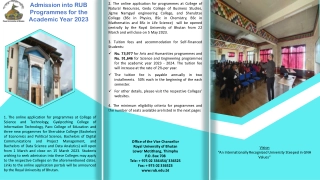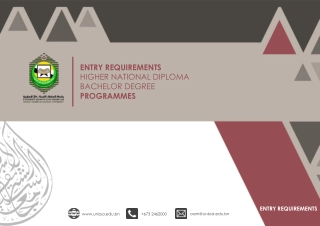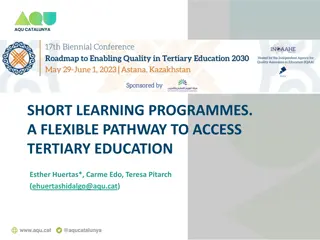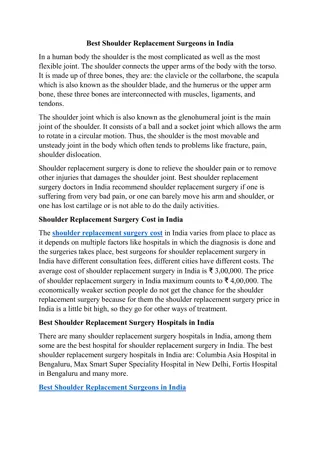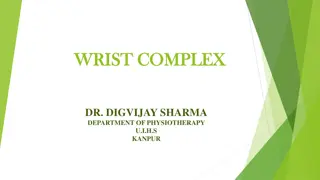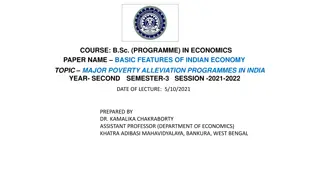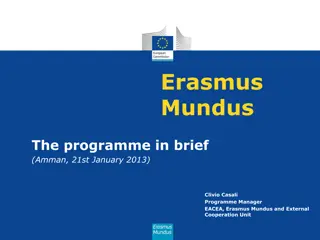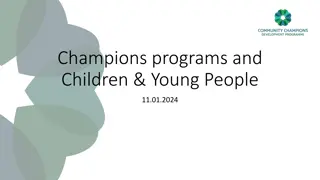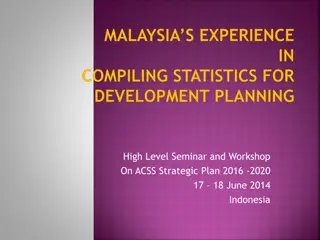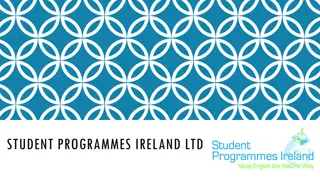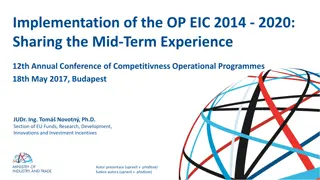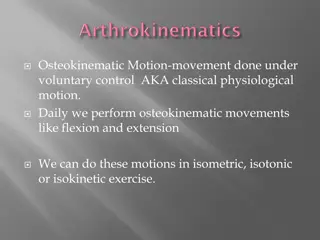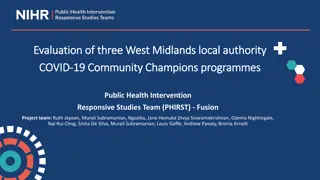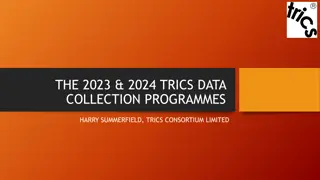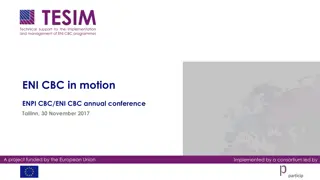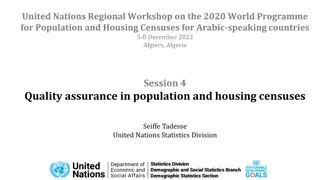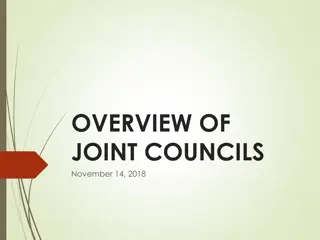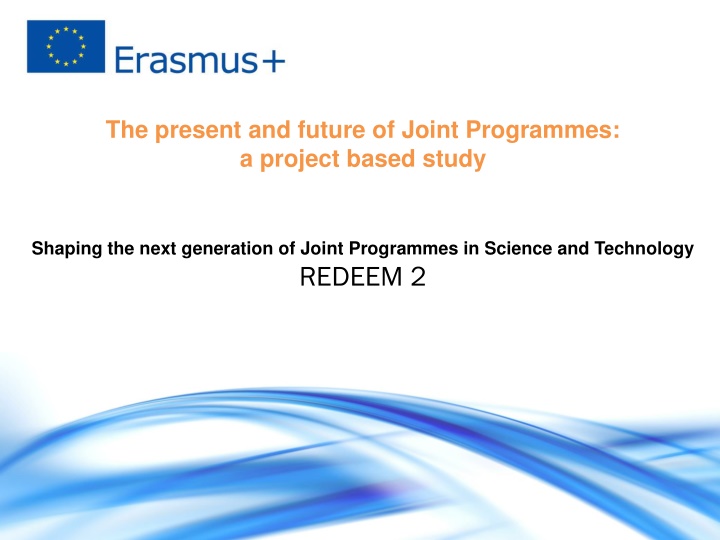
Shaping Joint Programmes in Science and Technology
In-depth analysis of the present and future of Joint Programmes in Science and Technology, with a focus on the REDEEM project. The study explores the development of Dual Degree programmes, feedback from stakeholders, and key conclusions including the impact, satisfaction levels, and misconceptions. Recommendations for future programme design and recruitment strategies are also provided based on the project findings.
Download Presentation

Please find below an Image/Link to download the presentation.
The content on the website is provided AS IS for your information and personal use only. It may not be sold, licensed, or shared on other websites without obtaining consent from the author. If you encounter any issues during the download, it is possible that the publisher has removed the file from their server.
You are allowed to download the files provided on this website for personal or commercial use, subject to the condition that they are used lawfully. All files are the property of their respective owners.
The content on the website is provided AS IS for your information and personal use only. It may not be sold, licensed, or shared on other websites without obtaining consent from the author.
E N D
Presentation Transcript
The present and future of Joint Programmes: a project based study Shaping the next generation of Joint Programmes in Science and Technology REDEEM 2
Background: why REDEEM 1 DD developed according to the needs of the providers 1 2 Often no feedback from the students 3 Often no correlation with the needs of the employers DD promoted but no tools to provide the students with a clear picture on the impact 4 5 Existing studies are incomplete (focusing on other areas, on one type of DD only, on mobility only, not comparative, not combining qualitative and quantitative analysis, not bringing together all the stakeholders, not producing guidelines for future use)
REDEEM 1 actions State of the art in the 6 countries (7 partners) Quantitative analysis: 1.600 respondents (alumni) Hard facts Motivations Impact Qualtitative analysis: 140 interviews+focus groups Guidelines: comprehensive checklist for developers with recommendations Repository of best practices
REDEEM 1 - General Conclusions DD analyzed are highly appreciated by the graduates The quality level has been stable over the past years DD graduates are more satisfied about the programme than other groups DD graduates earn more than their peers Two main categories of programmes: compatibility vs complementarity Impact analysis often lacking, incomplete or biased There are many misconceptions still in place Nature of the programme must be clear when designing and when recruiting
REDEEM 1 - General Conclusions Bettercommunication towards all the target groups on the actual impact needed Focused Marketing approach for DD vs exchange Specific support and services for the category Companies seek for DD profiles without realizing it Both students and employers favor an active involvement of companies in all phases (curriculum design, teaching with credits, definition of research topics, hosting mandatory internships) DD+ is the inevitable next step: creation of newly designed DD programmes based on the results and recommendations of this project Redeem 2
Now: why REDEEM 2? REDEEM 1: good preliminary results that need to be further exploited Need for further evidence to promote JPs Need for more comparable data from alumni and institutions (country, filed, programme, socio-economic background, ) Focus on the most recent graduates (3 last cohorts) Better information and communication towards companies (How?) Need to reform programmes (How?) Need to involve companies (we know why, but how?) Platform for the EUI
Full Partners KTH UPC Royal Institute of Technology, Stockholm Universidad Polytecnica de Catalunya, Barcelona Technische Universit t, Darmstadt Karlsruhe Institute of Tehnology Aalto University, Helsinki Instituto Superior Tecnico, Lisboa Tallinn University of Technology, Tallinn Czech Technical University, Prague TUD KIT AALTO IST TALTECH CVUT Associated Partners CLUSTER network T.I.M.E. association
Definitions Bologna Yerevan meeting Joint programme is understood as an integrated curriculum coordinated and offered jointly by different HEIs, leading to joint or multiple degrees. Joint degree - a single document awarded by HEIs offering the joint programme and nationally acknowledged as the recognized award of the joint programme. Multiple degree separate degrees awarded by issuing separate diplomas by the participating HEIs. If two degrees are awarded, it is a double degree .
Definitions Paris Communiqu In order to encourage the development of more joint programmes and joint degrees, we will also enable and promote the use of the European Approach for Quality Assurance of Joint Programmes in our higher education systems. We welcome and will promote the development of the Database of External Quality Assurance Results (DEQAR) We will foster and extend integrated transnational cooperation in higher education, research and innovation, for increased mobility of staff, students and researchers, and for more joint study programmes throughout the whole EHEA. We take note with interest of the recent EU initiative on European Universities and we will encourage all our higher education institutions to work in such new settings.
Our definition Joint Programmes here used as a general term covering all the forms of academic cooperation at any education level leading to the deliverance of a programme with embedded mobility offered jointly by at least two HEI located in two different countries. We talk about Joint Programmes leading to a Joint or Multiple Degree
REDEEM 2 September 2018 to August 2021 Institutional analysis ongoing (please contribute) Alumni survey ongoing (please contribute) Training event in December 2019 Dissemination event in Prague (spring 2020) Development of innovative JPs in 2020/21 Final event Stockholm spring 2021
REDEEM 2 Institutional Approach
REDEEM 2 Institutional survey Part 1: General information: number of existing JPs/DDs, structure of the JPs, certification awarded, average number of students enrolled, most popular countries, top fields, typical language of instruction. Part 2: student enrollment and support: JP alumni chapter/association, enrollment procedures, evaluation system, tutoring. Part 3: Funding and sustainability: sustainability, main sources of funding. Part 4: benefits and constraints: motivations to develop JPs, main perceived benefits, main challenges, legal requirements/constraints that complicate the setting up of JPs. Part 5: companies involvement: how, nature of the collaboration, main benefits, obstacles.
REDEEM 2 Institutional survey Characterization: 145 HEIs worldwide responded Geographical distribution: Europe 66%, Asia 15%, LA 12%, Oceania 5%, NA 3% Good distribution in term of HEIs size Existing JPs/DD per institution: Average: 18 Max: 180 Ratio DD/JPs: 3,6/1,0
REDEEM 2 Institutional survey Type of certificate awarded for the joint programmes % Each involved university issues a separate diploma 61,4% Each involved university issues a separate diploma with the addition of a joint certificate/diploma supplement 24,8% Only one joint diploma is awarded to the students on behalf of both/all involved universities 17,2% Other 6,2%
REDEEM 2 Institutional survey Do you have a specific alumni chapter/association for joint programme graduates? % No, and it is not planned 62,8% Yes, but only for graduates from a specific joint programme 16,0% No, but it is being created 13,8% Yes, for all the graduates from any joint programme 7,4%
REDEEM 2 Institutional survey Do you have a specific association for the current joint programme students? % No, and it is not planned 62,2% Yes, open to all students 23,3% Yes, but only for studants from specific programmes 7,8% No, but it is being created 5,6% Only the diploma of the home university is awarded with mention of the joint educational initiative in the diploma supplement 1,1%
REDEEM 2 Institutional survey Average (1 - Not Relevant ; 4 - Extremely Relevant) What are the motivations for your university to develop JPs? Advancing internationalization 3,7 Raising international visibility/prestige 3,5 Recruit talented and motivated students 3,4 Broadening education offerings 3,3 Strengthening research collaboration with the partner universities 3,1 Increasing foreign students enrollment 3,1 Responding to student demand 2,8 Responding to particular market demand Increasing revenue 2,4 1,8 Institutional rationale Students rationale Employers rationale
REDEEM 2 Institutional survey Average (1 - Not Relevant ; 4 - Extremely Relevant) What are the perceived benefits of having JPs in place? Increased international visibility 3,5 Development of strategic partnerships with the involved universities 3,5 Increased internationalization of campus 3,4 Recruitment of high potential students 3,3 Recruitment of more international students 3,1 Further joint programmes created following the previous experiences 3,0 Greater collaboration between faculty 3,0 New research projects with the involved academics at the partner university 2,9 Greater collaboration between administrative staff 2,4 Institutional rationale Students rationale
REDEEM 2 Institutional survey Average (1 - Not Challenging ; 4 - Extremely Challenging) What are the main challenges associated with setting up new JP? Funding 3,2 Sustainability 3,1 Curriculum design 3,0 Legal issues 2,9 Accreditation 2,8 Fees structure 2,6 Academic calendar 2,5 Institutional support 2,5 Degree duration 2,4 Credit transfer 2,3
REDEEM 2 Institutional survey Institutional Regulations that complicate setting up of JP Minimum requirements in terms of credits 5% 24% Accreditation 8% Language requirements 8% 12% Minimum requirements in terms of duration 22% 21% Prohibition of issuing two diplomas for the same amount of work Other Mandatory extension of the studies
REDEEM 2 Institutional survey General Conclusions: Separate diplomas are still the rule (85%) Extremely wide range of structures with growing 1+1 year JPs Bilateral vs Multilateral = 50/50 Size of the JPs: 50% of JPs have less than 25 students Motivation: focus still on the institution Challenges: funding and sustainability Involvement of employers still low (18%) Almost half of the respondents (46%) don t have a specific quality evaluation system for JPs English is the dominant language


